Packet Matching for NeTraMet Distributions
How to do packet matching with NeTraMet, by Nevil Brownlee (The University of Auckland / CAIDA, n.brownlee@auckland.ac.nz). This slide set was presented at the 2000 IETF in Adelaide, Australia.
RTFM Turnaround Times
- Last RTFM meeting (DC IETF December 99) discussed better ways to recognise send/reply packet pairs, so as to get better Round-trip (Turnaround) Times
- The WG agreed that we should make a (short) list of protocols for which a meter can reliably detectrequest/response pairs. For example:
- ICMP echo/response
- DNS (UDP) echo/response
- SNMP (UDP) request/response
- TCP SYN/SYN-ACK, data/ACK
- I have implemented packet-pair matching in NeTraMet 44b6; ßThis talk presents some experimental results gathered to date
- All the distributions presented cover 10-minute intervals
Matching UDP Packets
- An IP flow may aggregate many ICMP, UDP or TCP streams
- Each stream maintains a queue on information about observed packets, including
- Direction (S->D or D->S)
- Time observed
- Protocol
- Information about packet
- Ping, DNS and SNMP have explicit sequence numbers which are
easy to match, yielding RTTs - Timed-out request packets (RTT > upper limit of distribution) are counted as 'lost' packets
UDP RTT Measurements
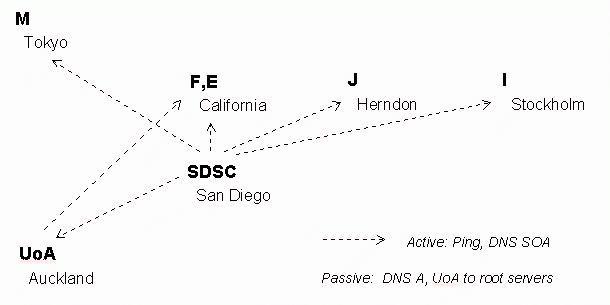
- Above map shows the sites selected for experiments From SDSC
- Ping and DNS SOA . to E, J, I and M root servers
- Ping and DNS SOA clear.net.nz to dns1.clear.net.nz
- Ping and DNS SOA . to F root server
- Passive observation of DNS A to F, J, I and M root servers
- Passive observation of recursive DNS A to dns1.clear and nzix
- Mutually prime intervals were chosen for the test packet streams so as to avoid synchronisation effects
- ToTurnaroundTime distributions were collected every 10 minutes
- Above map shows the sites selected for experiments From SDSC
-
(Active) DNS RTTs Observed at SDSC
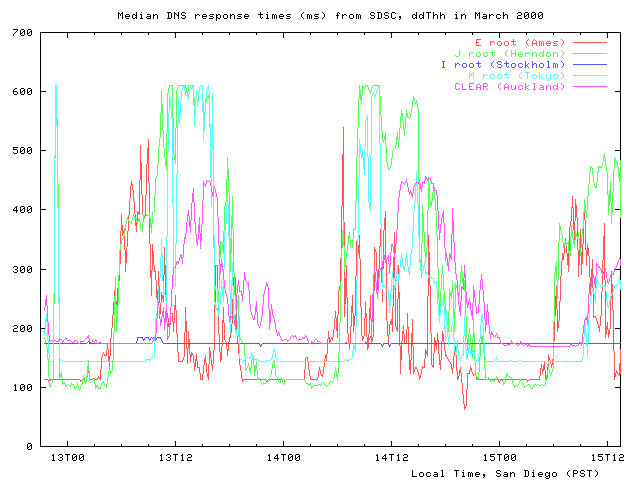
- E and J show U.S. diurnal variation
- M and CLEAR show Asia-Pacific diurnal variation
- I (Stockholm) has much less variation
(Active) J root (NSI) RTT and Loss % from SDSC
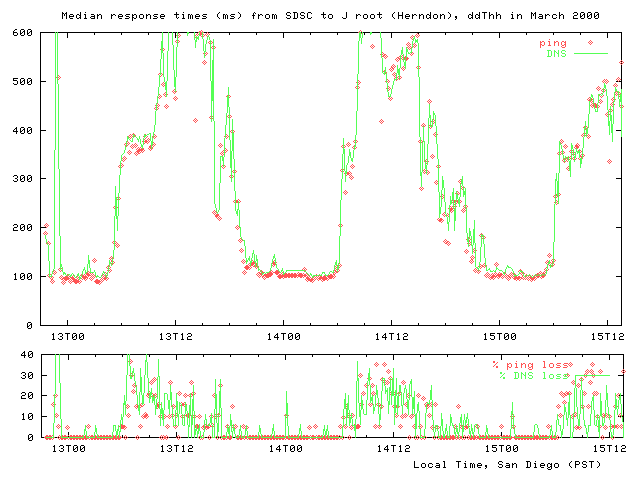
(Active) I root (KTH) RTT and Loss % from SDSC
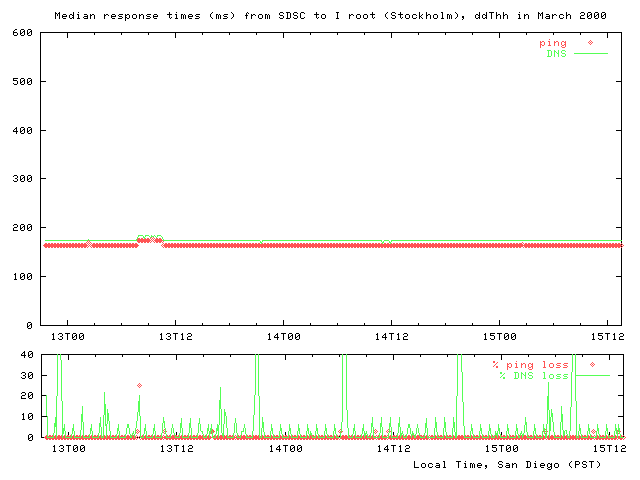
(Active) Auckland DNS RTT and Loss % from SDSC
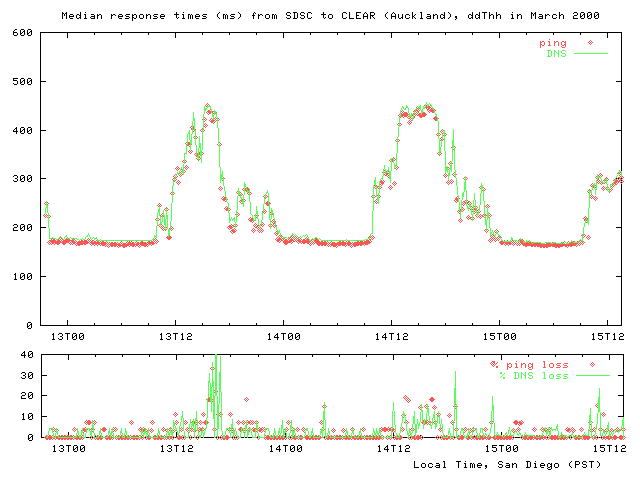
(Passive) DNS RTTs Observed at Auckland
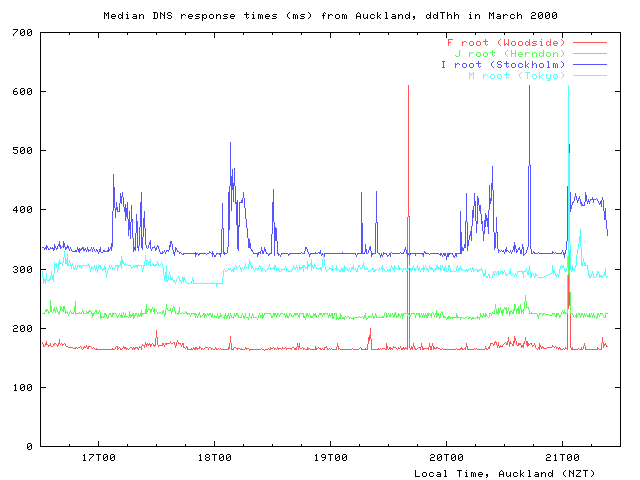
(Active) F root (Woodside) RTT and Loss % from Auckland
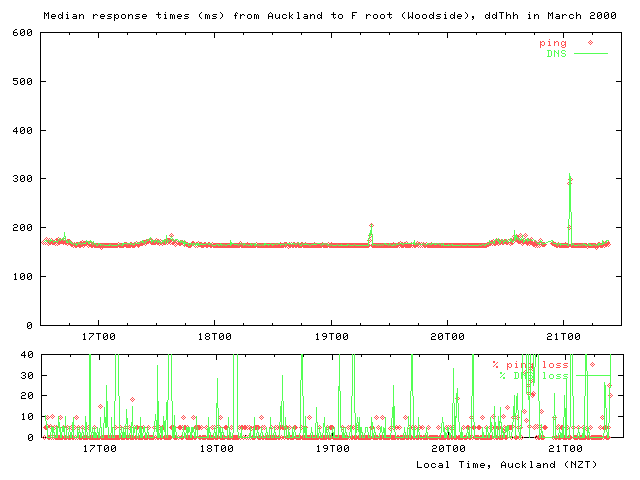
Active and Passive DNS RTTs from Auckland
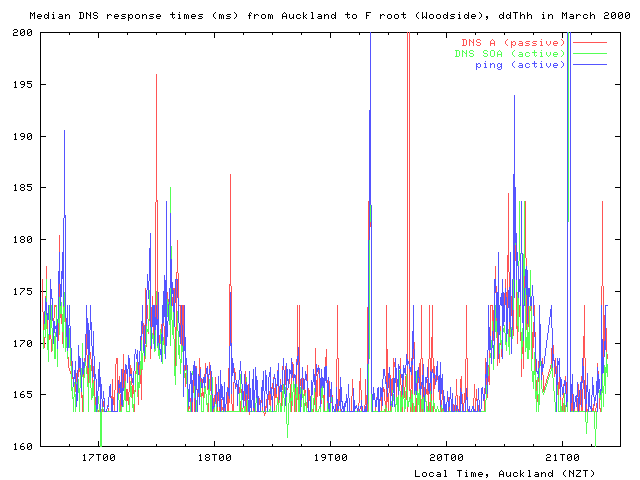
(Passive) New Zealand DNS RTTs from Auckland
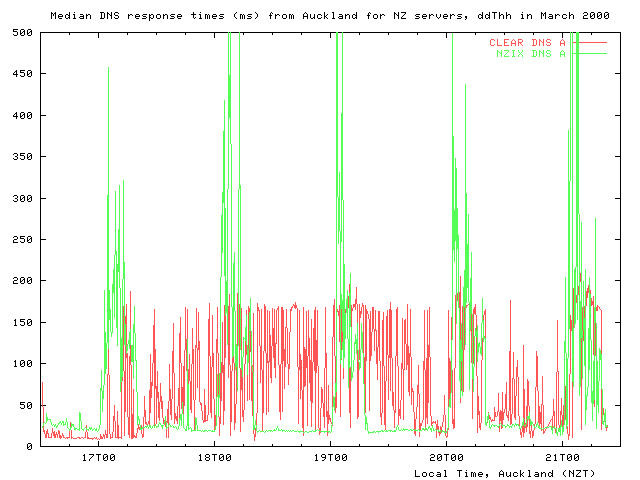
-
Matching TCP Packets
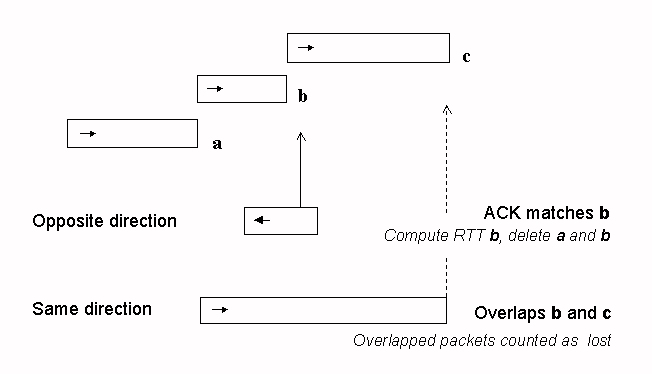
- TCP queue kept in ascending order of expected Acks
- Can't get RTT for every packet, only those which are ACKed
- Overlapping packets (resent) are counted as lost, but not queued
- This means the first copy of resent packets are used for RTTs, giving a high RTT estimate
Passive TCP RTTs (1..120 ms) from Auckland to dblclick.au (Melbourne)
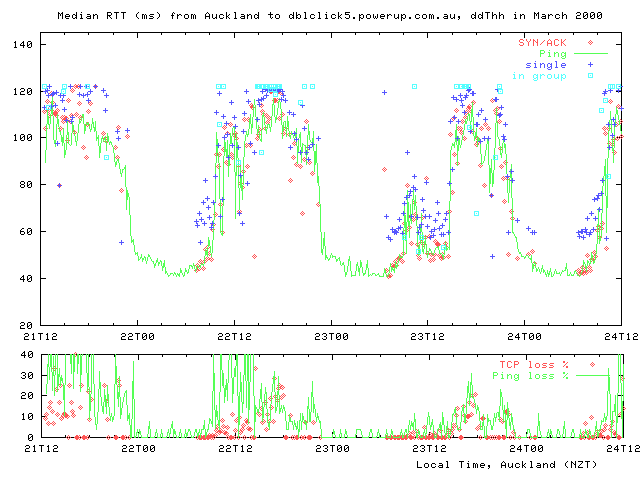
Passive TCP RTTs (1..120 ms) from Auckland to global-centre (Melbourne)
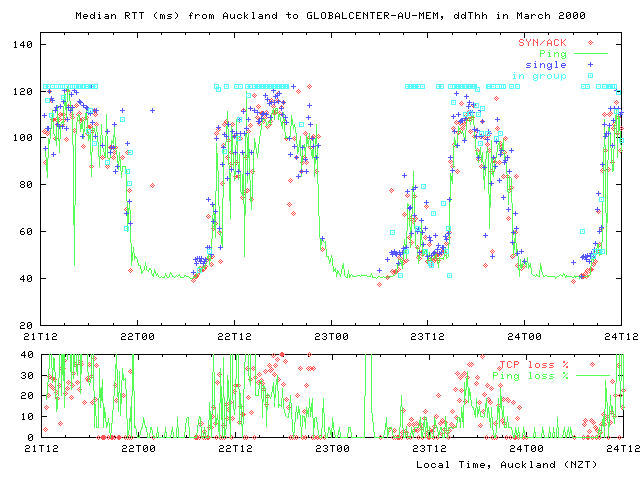
-
Comments on TCP RTTs
- SYN/ACK is a good estimate of RTT
- 'Single' data/ACKs are a little higher
- 'In group' data/ACKs are much higher - this seems surprising
TCP Stream Size distributions
- Observed at Auckland gateway for all TCP traffic in and out
- Stream size = difference between first and last SEQ numbers
- Distribution counters are incremented when a flow terminates
TCP Stream Sizes (3.. 1500 Bytes) on Tuesday 21 March
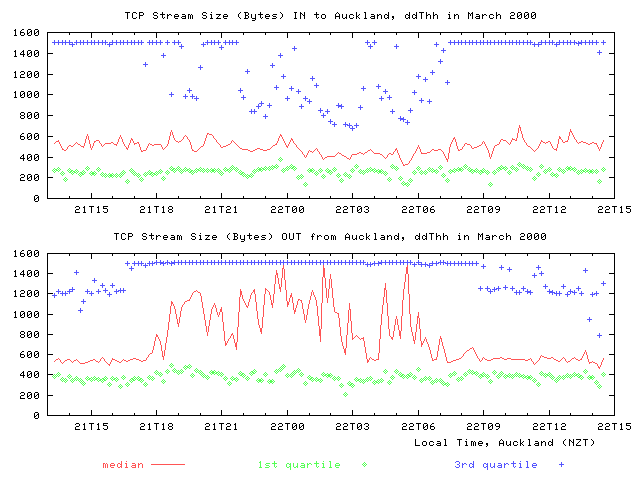
TCP Stream Sizes (1..1500 kB) on Friday 24 March
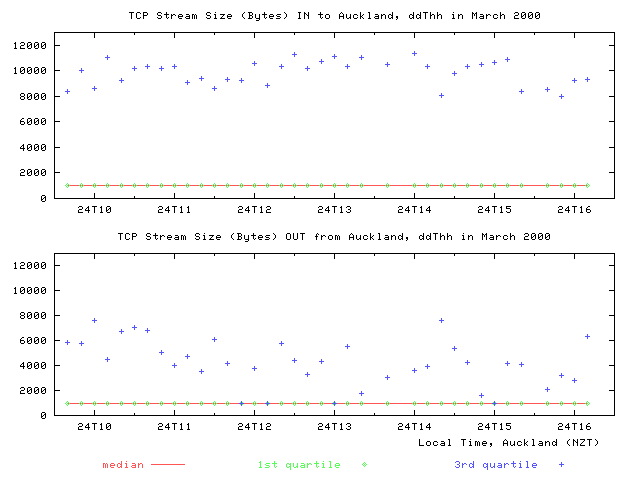
Conclusion
- DNS RTT for SOA and A from root servers matches well with Ping RTT, Passive DNS A RTTs provide a good overview of network availability
- 'Single' Data/ACK pairs are a fair approximation to RTT for long-running streams
- TCP RTT for SYN/ACK matches well with Ping RTT, Single data/ACK pairs are a good approximation for short-duration streams
- Nearly all the TCP streams to/from Auckland have < 1k bytes in them; most streams will have only one or two packet pairs in them !

